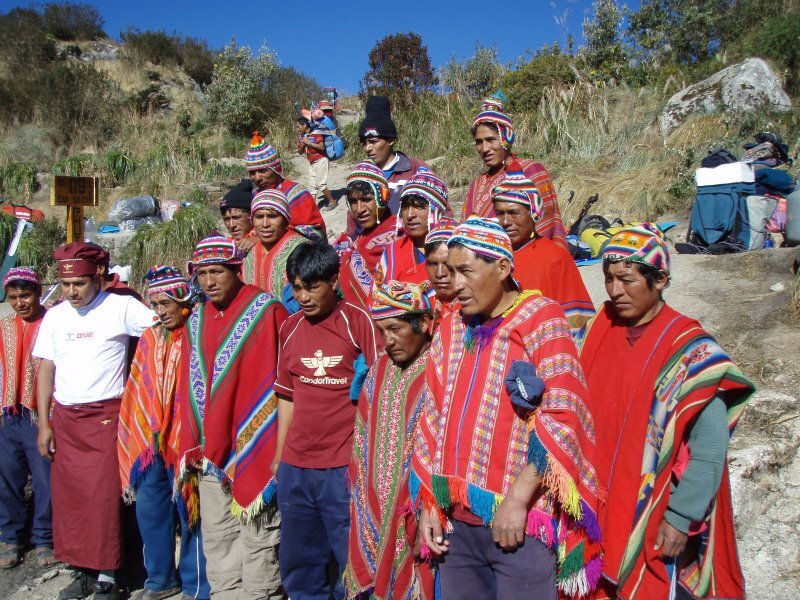Indigenous Culture In Northern Peru
With around 33 million people, Peru is the fourth most populous nation in South America. Around 45 percent of the citizenry is indigenous, the second highest percentage in the western hemisphere, after Bolivia.
The rest of the population is primarily divided between those of mestizo - or mixed - ancestry (37%), or those of European origin (15%). There are also small African and Asian ethnic groups.
The result, then, is a very high cultural diversity with 14 linguistic families, and 44 distinct ethnic groups … of which 42 are found in the Amazon.
Quechua-speaking ladies making textiles in The Sacred Valley, Cusco.
Indigenous Peoples of the Andes:
The most numerous indigenous population, however, is to be found in the Andes mountains, amongst the Quechua-speaking people who trace their origins to the Inca - and other peoples who lived in the Andes at the time of the Spanish Conquest.
Quechua is the native tongue of more than three million Peruvians, mostly in the central and northern Andes.
It should be noted though, that Quechua is in fact a family of languages, with four recognised dialects. So natives of Huaraz, for example, will struggle to understand Quechua-speakers from Cusco or Cajamarca.
There are also around half a million people in the Lake Titicaca region and along the Bolivian border who speak Aymara, another ancient Andean language.
Indigenous Peoples of Amazonia:
An Ashaninka shaman.
Dozens of different Amerindian groups call Peru’s Amazon Basin home, including the Aguarana, Machigenga, Shipibo, Urarina, Yagua, Matses and Ashaninka.
In fact, Peru boasts the third highest number of indigenous groups, after Brazil and Papua New Guinea, in the world; and the highest number of ‘uncontacted’ indigenous communities in the world.
In addition to their own languages, many of these rainforest dwellers also have distinct traditions and customs from the pre-Columbian and Iberian-inspired cultures of highland and coastal Peru.
Some of these jungle groups number no more than a couple of hundred people. And they have varying degrees of contact with the outside world.
Some are fairly well integrated into the urban societies of jungle cities like Iquitos and Pucallpa; others continue their nomadic ways, and have little or no contact with the world beyond their range.
How to Experience Peruvian Indigenous Culture:
On a PeruNorth trip to an Amazon lodge or cruise, you are likely to witness those indigenous people that are more integrated, for obvious logistical reasons. We visit riverside villages, where the language is usually Spanish and the dress is ostensibly Western … and yet many ancient traditions and beliefs lie close to the surface.
While, for the adventurous, we offer a 12-day Matses Indigenous Amazon Trek, where you will have the opportunity to witness the unique lifestyle of the Matses first-hand, well away from urban influences.
Hiking is generally a very good way to see Peru’s more traditional lifestyles, in the countryside. This is undoubtedly the case in the Quechua-speaking Cordilleras around Huaraz:
Even on a trek as popular as the Classic Inca Trail, the porters are hired from farming communities in rural Cusco who often wear a mix of traditional and modern clothing - sandals made from recycled tyres, football shorts and shirts, and ponchos!
The trek crew on the Inca Trail.



